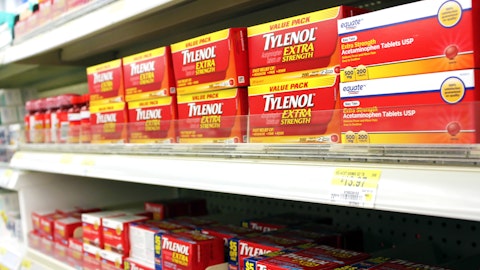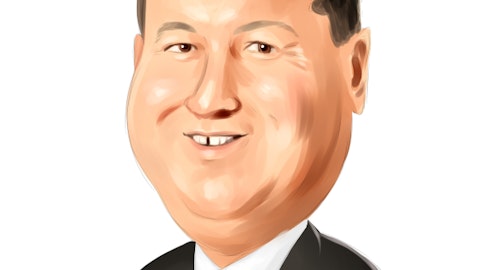Johnson & Johnson commands premium pricing through its well known consumer brands. The company owns the following well-known consumer health brands (among others):
- Tylenol
- Band-Aid
- Zyrtec
- Listerine
- Johnson’s
- Neutrogena
- Aveeno
- Motrin
The company supports its consumer brands and pharmaceuticals with large advertising spending. In 2014, Johnson & Johnson spent $2.6 billion on advertising. The company spent $2.5 billion in 2013.
Current Events & Growth Prospects
Johnson & Johnson (NYSE:JNJ) posted 6.7% constant-currency adjusted earnings-per-share growth in its most recent quarter. The company has grown earnings-per-share at 6.1% a compound rate of 6.1% a year over the last decade. Recent results were in line with historical average growth – just what one would expect from a highly stable business.
Going forward, Johnson & Johnson’s biggest growth driver will likely be its pharmaceutical segment. Pharmaceutical sales have grown at 13.1% a year from 2012 through 2014. Johnson & Johnson’s large research and development spending will drive further growth in the pharmaceutical division.
Popular financial pundits have been calling for the breakup of Johnson & Johnson recently. Spin-offs are typically good for shareholders. If the company were to split into three smaller businesses (one for each segment), it is difficult to say whether shareholders would be better served or not.
Those who wanted to own the ‘whole business’ could still do so by not selling any of the three spin-off companies. Those who want to focus just on Johnson & Johnson’s faster growing pharmaceutical segment, or more stable consumer segment, could do so. In the final analysis, a split-up would probably be beneficial for shareholders in the long-run, but is not in any way necessary to make Johnson & Johnson an excellent investment choice.
Valuation & Final Thoughts
Johnson & Johnson currently trades for an adjusted price-to-earnings ratio of 16.6. The company appears somewhat undervalued at current prices. The company has a 3% dividend yield and should grow earnings-per-share at around 5% to 7% a year going forward, for total returns between 8% and 10% a year.
Total returns of 8% to 10% a year mean Johnson & Johnson offers investors returns that are around the S&P 500’s long-term historical average of 9% a year. The difference is, Johnson & Johnson is an incredibly stable business with an extremely low stock price volatility. Simply put, Johnson & Johnson offers investors market-matching returns with lower risk.
An investment that offers similar returns to the overall market, but with less risk should trade at or above the price-to-earnings multiple of the S&P 500. The S&P 500 is currently trading for a price-to-earnings ratio of 21.1, versus 16.6 for Johnson & Johnson. This is why Johnson & Johnson appears undervalued at current prices.
Johnson & Johnson (NYSE:JNJ)’s combination of a 3% dividend yield, solid total return potential, long history of success, and an extremely low stock price volatility make it a Top 25 stock using The 8 Rules of Dividend Investing. The company makes an intriguing investment for risk-averse investors looking for growing income.
Disclosure: None




